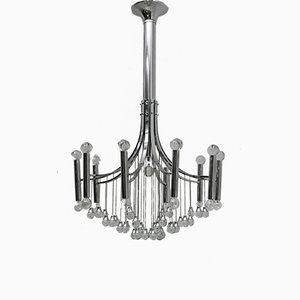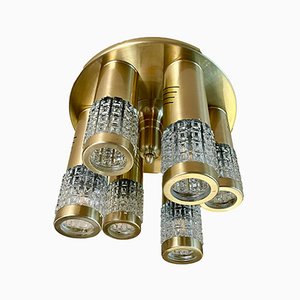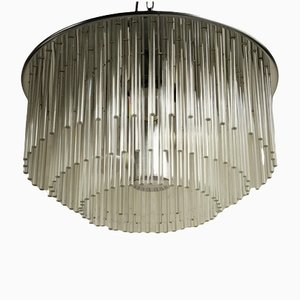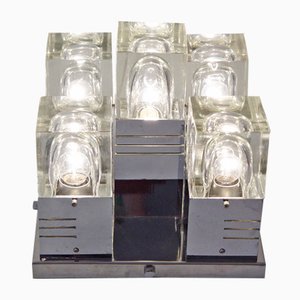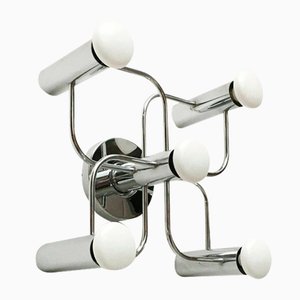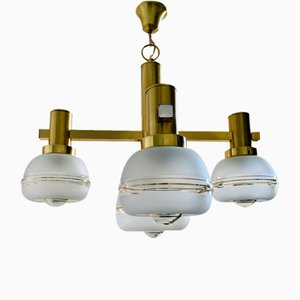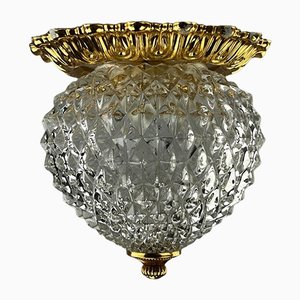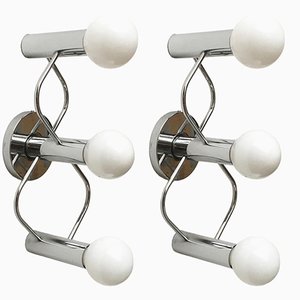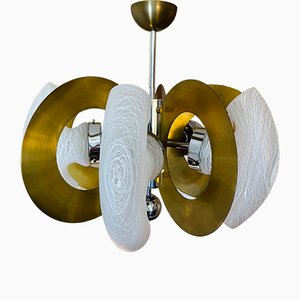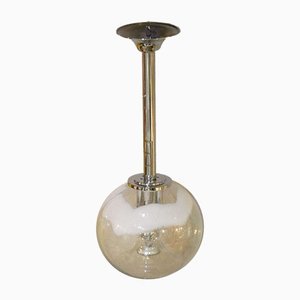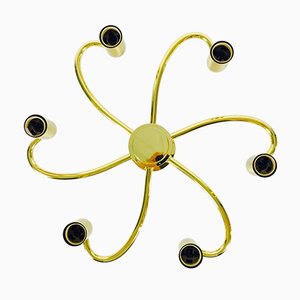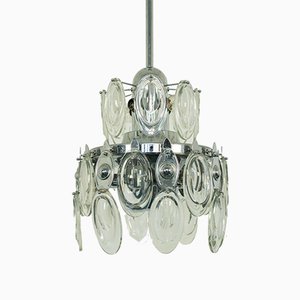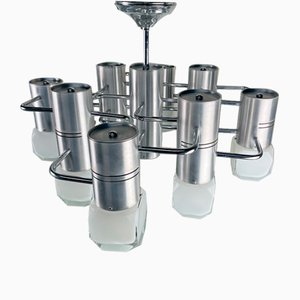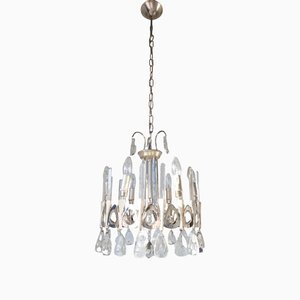
The lighting designs of Italian entrepreneur-designer Angelo Gaetano Sciolari have recently come back into the spotlight, particularly as glamorous 1970s pieces have attracted a new generation of admirers. Some solid biographical information on Sciolari has survived, but given his current popularity, additional details would be very welcome.
Sciolari was born in 1927. After graduating with a degree in architecture, he began training as a film director. When his father died unexpectedly in 1949, he returned home to run the family business, Sciolari Lighting, which was originally founded in 1892.
Sometime in the 1950s, Sciolari became the in-house designer for legendary lighting manufacturer Stilnovo—founded by designer Bruno Gatti in Milan in 1946. In the postwar era, many Italian design companies, Stilnovo in particular, were attracting international acclaim for their experimentation with new materials and streamlined silhouettes. Sciolari, however remained attracted to slightly more traditional expressions, often employing opaline glass, perspex, and brass. His Molecular Chandelier (1955) produced by Stilnovo, for instance, showcases his penchant for blending modernist geometry with deco-style materials.
In the mid-to-late-1960s, Sciolari's designs for his own manufacturing company began to take off with high-end interior designers in Europe and the US. This body of work was influenced by a range of art movements, from Cubism and Deconstructivism, to Minimalism, but always exhibited a sophisticated, sculptural, and even futuristic interpretation. He utilized crystal and ice glass while juxtaposing highly polished metals against satin finishes, including the unconventional combination of brass with chrome.
During the 1970s, Sciolari Lighting imported lamps to America via Lightolier & Progress Lighting, which featured many Sciolari collections in annual catalogues, including Sciolari's Geometric Series, Habitat Series, Scultura Series, and Futura Series (specific design dates unknown). The result was massive sales and a successful expansion of the family business.
Many argue that Sciolari produced his best work in the 1970s, when design tastes began to shift away from strict modernism in favor of more crafted and decorative aesthetics alongside Art Deco and "space age" styling—a similar trend can be seen in the work of , Paul Evans, François Monnet, and Verner Panton. Sciolari’s Cubic Series, which was realized in a variety of sizes, configurations, and finishes, is Sciolari’s most well known design form these years; it appeared in many TV shows in the 1970s and '80s.
Notably, Sciolari was the founder and first president of the trade association of Italian manufacturers of lighting fixtures.
Sciolari passed away in 1994. Today, his lamps, pendants, and chandeliers fetch high prices and are highly-sought after by collectors.

